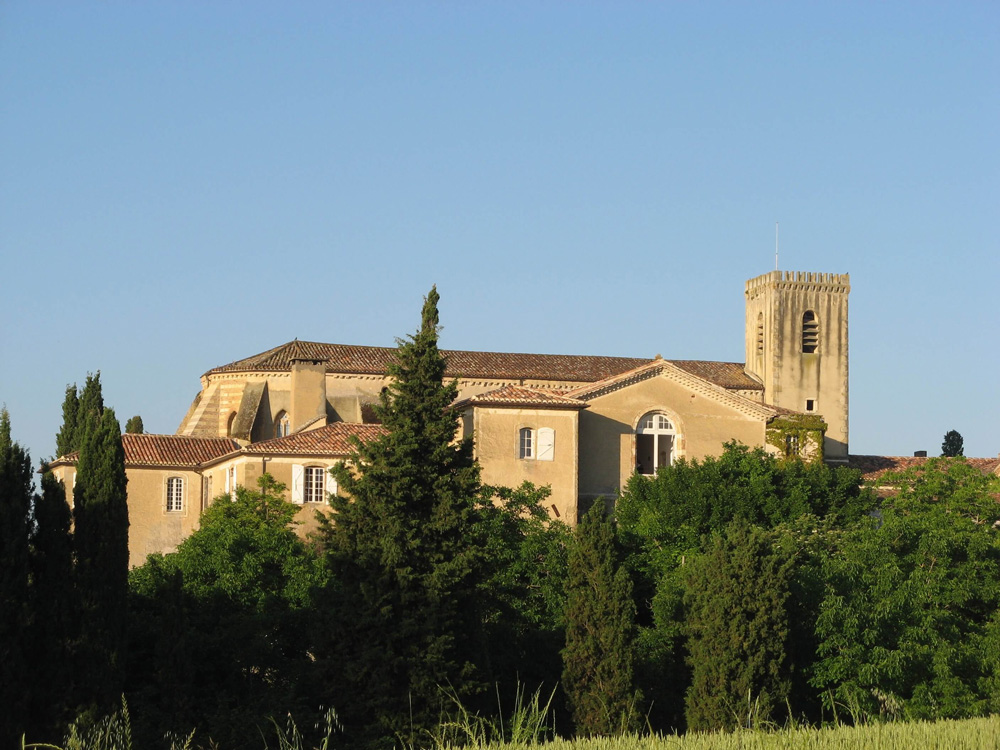
At the Abbey of Boulaur, Cistercian nuns have been installed since 1949, in an abbey-church dating from the 12th century! Their ambition today? To revive a "Cistercian barn", as in the belle époque in the 12th century, in order to develop their agricultural production and to promote local craftsmanship! To do this, they recently launched a participative workcamp.
A bit of History...
In 1142, Pétronille de Chemillé, abbess of Fontevraud, founded the abbey of Boulaur.
The abbey has survived through the centuries without a hitch, and all this in a magnificent setting in the middle of the Gers.
Life is hard and the abbey is not fortunate, but everything goes pretty well, until the day when... patatra, the Revolution comes !
The abbey of Boulaur is confiscated by the State, and the community is dissolved. A little later, during the 19th century, some fontevist nuns try to give life to the place, but they are expelled in 1904 by anticlerical laws.
Thus, it was only in 1949 that monastic life really began again at the Abbey of Boulaur!
In fact, four Benedictine nuns bought the abbey that year and launched a new community.
But vocations were few and far between...
In 1979, the situation was really critical, as the abbey had only five sisters. The superior of the Cistercian order had an idea: to pray to Claire de Castelbajac, a young girl from the country who had died a few years earlier in the odor of sanctity...
A few months later, here are five young girls knocking at the door of the abbey: one of them is called Claire!
Coincidence? In any case, monastic life is beginning again in Boulaur!
The present situation
Today, the community has 27 Sisters, who radiate their dynamism and youthfulness. They are Cistercians (of the Common Observance) and follow the Rule of St. Benedict, dividing their time between prayer and work. Thus, they pray seven times a day in community, and the first office of their day is at 5:15 a.m.! As far as work is concerned, they live mainly from what they produce (organically) on their farm and their 27 hectares of land! Between the cows, the pigs, the vegetable garden and the orchard, there is plenty to do: cheeses, terrines, pâtés, jams?
Surprising, no...
The abbey is located in the Gers, in a magnificent setting! It is from this landscape that the name comes from : Boulaur comes from Bonus Locus, which means the right place in Latin ! And it is the abbey which ends up giving its name to the village of Boulaur, which was called before Saint-Germier!
On the architectural side, only some walls and a Romanesque door remain from the primitive church. Some parts were restored in the fourteenth century, and one can still admire paintings from the school of Giotto!
In the cloister (if some lucky people were ever lucky enough to get there), the sisters keep a statue of the Virgin and Child.
This statue, called the "Beautiful Lady of Boulaur", was found under a tile floor!
The sisters are deeply grateful to Claire de Castelbajac for having brought vocations to the abbey.
They are the ones in charge of her beatification process at the Vatican!
And since 2004, the body of Clare lies at the back of the church, watching over the sisters and the people passing through!
If you pass by, don't hesitate to drop by and see her!
Abbey of Boulaur
32450 Boulaur
Phone: 05 62 65 40 07
https://divinebox.fr/categorie-produit/producteurs/abbaye-de-boulaur/
Translated with www.DeepL.com/Translator
(free version)



